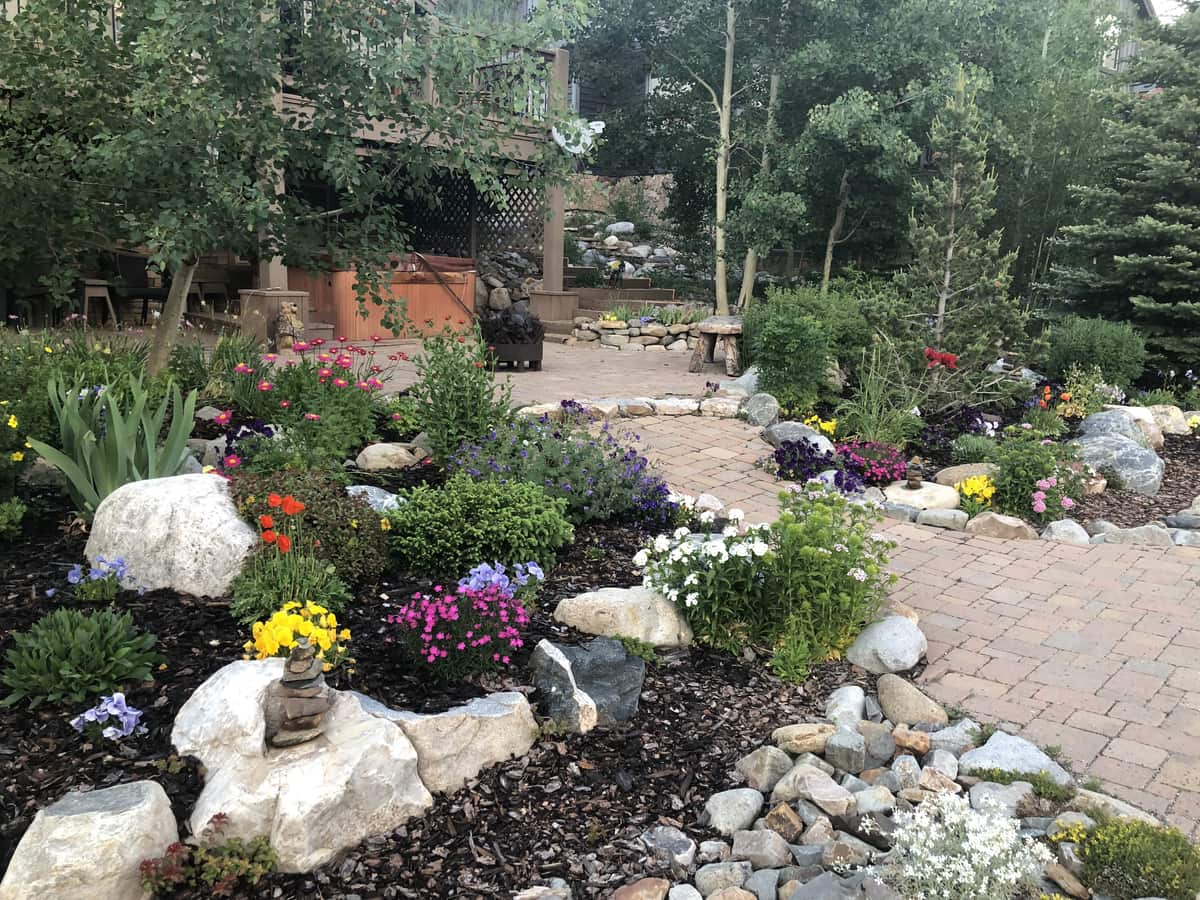
- High Country Conservation
- January 29, 2024
- Ask Eartha
Dear Eartha, I’ve heard more and more about the water shortage impacting Colorado and other western states. What can I do to reduce the amount of water I use at home?
Water conservation is a very important topic everywhere, but especially here in the western part of the US. While shortening your shower and installing efficient appliances are both important, grass lawns are notorious for draining water supplies (and your wallet). That’s right, your lawn soaks up over 50% of the water you use. Kentucky Bluegrass is the biggest culprit. This type of grass is not native to our dry environment, and it demands huge amounts of water to stay green. But what is the alternative? Let’s look to nature for the answer.
Perfectly Prepared Plants
The plants and trees that are native to Colorado naturally require less water than the “transplants.” That said, there are many non-native plants you can use in your water wise garden. Just be sure they met the same water, sun, soil texture, and elevation requirements. Replacing just a portion of your lawn with these plants, what we refer to as low-water or drought resistant, you can save gallons of water and money. In fact, one homeowners’ association in Denver saved 15 million gallons of water in a single year after transitioning to low-water plants and prioritizing water saving upgrades. You read that right, 15 million gallons of water saved! So, what are some of these magical plants? I am so glad you asked.
The Magnificent Seven
While there are endless possibilities for your new low-water plant friends, here are seven of the most popular plant types that thrive at 9,000 ft and above:
Fringed Sage is a native Colorado plant that provides multiple benefits to your new garden, and it’s pretty too. The soft sage green color provides the perfect back drop to help the rest of your plants pop. It has a lovely silver shimmer that really sparkles in the sun. It will help keep your soil stable and create the perfect ground cover.
It should come as no surprise to anyone that our state flower, the Columbine, is a perfect addition to your low-water garden. Its unique five-petaled blooms with long backward-extending spurs makes the columbine stand out among its peers. You can also find it a variety of colors.
A perennial favorite, the Rocky Mountain Penstemon, also known as “beardtongue”, with its vivid purple-blue blooms, really catches your eye. Not only are these beauties drought resistant, but they also provide nourishment for bees, butterflies, and hummingbirds.
Looking for a flower that will spread its wings in the garden? Then the Deep Red Oriental Poppy is a great choice. Despite the fact that these poppies are not native, they are perfectly suited to our dry and direct sunny summers. As a bonus they naturally repel disease, deer, and rabbits.
One of my personal favorites is the Alpine Aster. This lavender daisy doppelganger just makes my heart smile. A native of Asia and Europe, this hardy little plant thrives at elevations up to 12,000 ft. The Colorado mountains offer the perfect conditions for the alpine aster to thrive.
The Scarlet Gilia as the name suggests typically produces scarlet petals, but can range in color including white, salmon, or pink. Add this to the mix in your garden and don’t be surprised to see an uptick in hummingbird visitors.
Last, but not least, I’d like to introduce you to the Blanket Flower. This lovely little flower resembles a black-eyed Susan but with an orange-red center with its yellow petals. This hard working plant is not just a pretty face, it is often used to restore soil health in reclamation projects.
Gardens, Not Lawns
Changing our notion of what landscaping means can save gallons of water and buckets of money. Ready to get your hands dirty? Check out the Colorado Native Plant Society for recommendations on a variety of plants you can use in your new low-water garden. It even gives you suggestions on mapping out your selected plants. Alternatively, many of our local landscape professionals have a deep understanding of the low-water plants that work well in the mountains. And, for those areas of grass you’re not ready to part with, make sure your sprinklers are in tip-top shape every spring. Learn more at HighCountryConservation.org/water.
Ask Eartha Steward is written by the staff at the High Country Conservation Center, a nonprofit dedicated to waste reduction and resource conservation. Submit questions to Eartha at info@highcountryconservation.org.
